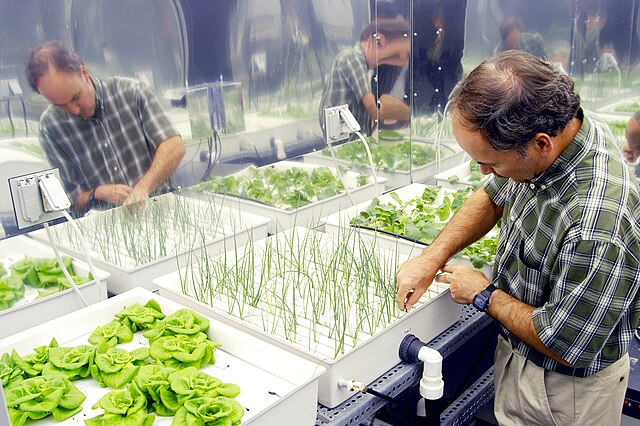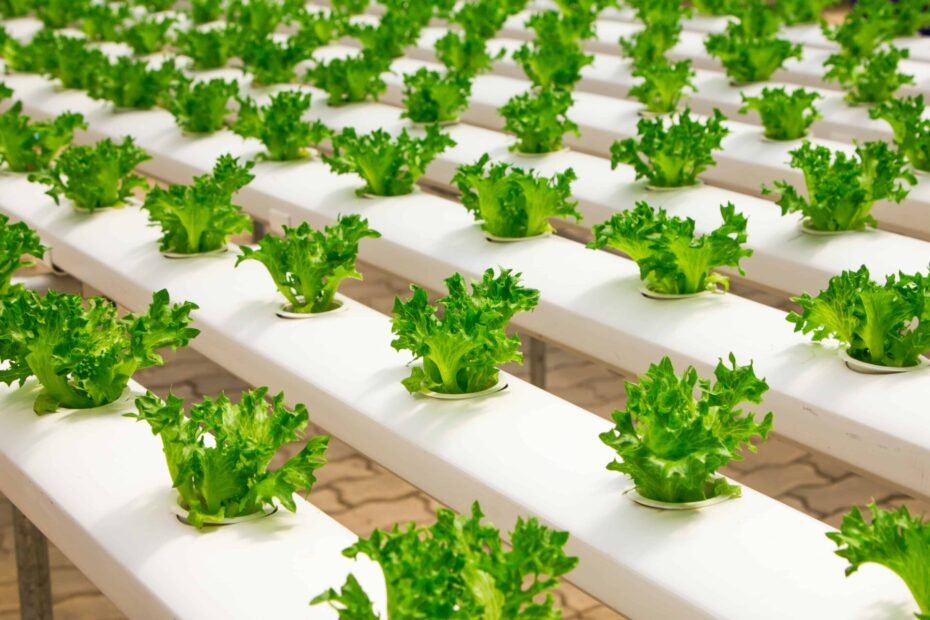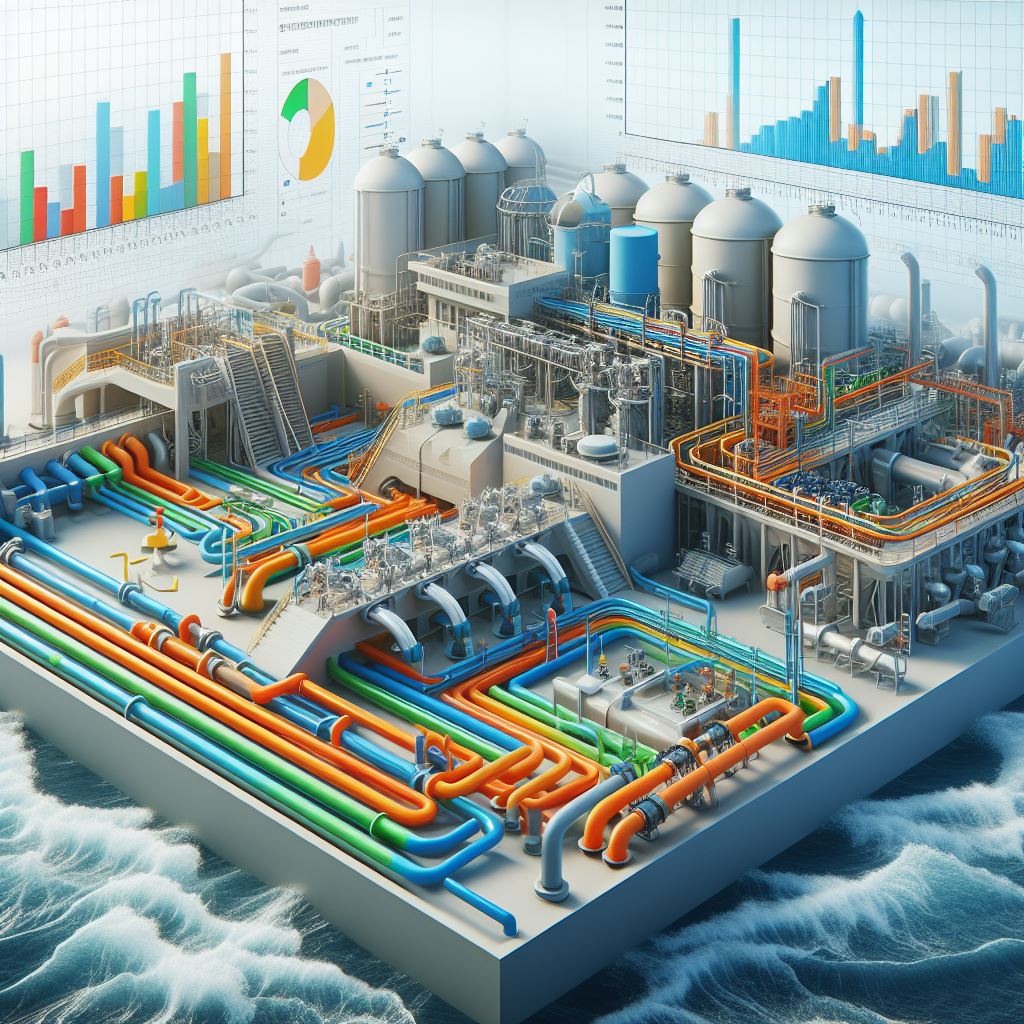I. Introduction: Hydroponics
A. Setting the Stage: The Evolution of Agriculture
Throughout human history, agriculture has been the cornerstone of civilization, shaping societies and sustaining populations. From the earliest days of tilling soil to the modern mechanized farms, humanity’s relationship with the land has evolved, adapting to technological advancements and environmental changes. As populations burgeoned and arable land dwindled, the need for innovative farming methods became paramount.
B. Defining Hydroponics: A Soil-Free Revolution
In the quest for sustainable agriculture, hydroponics emerges as a revolutionary paradigm shift. Unlike traditional soil-based farming, hydroponics does away with the need for fertile land altogether. It’s a method of growing plants in nutrient-rich water solutions, with roots suspended in a medium like perlite or gravel, without any soil involvement. This soil-free approach challenges conventional notions of farming, offering a promising alternative to traditional agriculture’s limitations.
C. Preview of Benefits and Challenges
Hydroponics promises a host of benefits, including increased crop yields, efficient resource utilization, and year-round production. However, it also presents its own set of challenges, ranging from technical complexities to initial investment costs and environmental considerations. As we delve deeper into the world of hydroponics, we’ll explore these advantages and obstacles, offering insights into the potential and practicalities of soilless farming.
In the subsequent sections, we’ll trace the historical roots of hydroponics, unravel its operational mechanisms, examine its advantages over conventional farming methods, and confront the challenges that lie ahead. Through this exploration, we aim to paint a comprehensive picture of hydroponics, illuminating its potential to revolutionize the way we grow food and sustain our future.
This introduction sets the stage for a journey into the realm of hydroponics, where innovation meets tradition, and sustainability intertwines with progress.
II. The Roots of Hydroponics
A. Historical Origins: From Ancient Times to Modern Innovations
In the vast tapestry of agricultural history, hydroponics emerges not as a recent invention but as a timeless idea that has threaded its way through the ages. The notion of growing plants without soil has ancient roots, akin to seeds planted in the fertile soil of human ingenuity.
Picture the Hanging Gardens of Babylon, a marvel that whispers of an ancient understanding of cultivating greenery without the reliance on the Earth’s crust. Millennia ago, ingenious minds sought ways to nurture life in barren landscapes, experimenting with alternative mediums to cradle seeds and coax forth the bounty of nature.
Fast forward to the 17th century, where the English philosopher Francis Bacon proposed the idea of growing plants without soil, envisioning a future where agriculture defied the conventional boundaries of dirt and loam. Yet, it wasn’t until the 19th century that the concept took root in the scientific imagination.

B. Key Figures and Milestones in Hydroponic Development
In this journey through time, certain figures stand as beacons, illuminating the path towards modern hydroponics. One such luminary is Julius von Sachs, a German botanist whose experiments in the mid-19th century laid the groundwork for understanding plant nutrition. Sachs’ revelations about mineral solutions providing essential nutrients to plants paved the way for the hydroponic systems we know today.
The early 20th century witnessed the baton passing to the American botanist William Frederick Gericke, a pioneer who coined the term “hydroponics.” Gericke’s research at the University of California in the 1920s demonstrated the remarkable potential of growing plants in nutrient-rich water solutions. His work spurred the establishment of hydroponic laboratories and fueled interest in soilless cultivation.
Milestones multiplied in the latter half of the 20th century. NASA, in its pursuit of sustainable space farming, explored hydroponics as a solution to grow crops in extraterrestrial environments. This cosmic experiment not only bolstered the credibility of hydroponics but also brought it into the orbit of mainstream agriculture.
From these historical roots, hydroponics sprouted into a modern agricultural revolution, embraced by farmers, researchers, and forward-thinkers worldwide. The journey from ancient hanging gardens to contemporary vertical farms illustrates the resilience of an idea, cultivating not only crops but also possibilities.
As we delve into the layers of hydroponic history, we uncover a narrative woven with innovation, persistence, and the collective aspiration to grow beyond the constraints of soil. The roots of hydroponics, firmly anchored in the past, reach out towards a future where agriculture knows no bounds.
III. How Hydroponics Works
A. Principles Behind Soilless Farming
In the realm of hydroponics, we liberate our crops from the shackles of soil, venturing into a world where roots explore water, not earth. The essence lies in nutrient-rich water delivering a direct handshake to the plant’s roots, bypassing the traditional soil route. This method is not merely rebellion; it’s a scientific tango with the essence of growth.
Picture this: traditional farming is like a blind date between roots and soil, hoping for compatibility. Hydroponics, on the other hand, orchestrates a meet-and-greet between roots and a nutrient-packed liquid, ensuring a match made in growth heaven. No guessing games—just a direct infusion of essential elements for plant vitality.
B. Types of Hydroponic Systems: Deep Water Culture, Nutrient Film Technique, and More
Diving into the hydroponic repertoire reveals a symphony of systems, each conducting the growth orchestra in its unique way.
- Deep Water Culture (DWC): Imagine plants gently floating on the water’s surface, their roots dangling below, soaking up nutrients like sponges. In DWC, simplicity reigns as plants find solace in a nutrient-rich pool, fostering growth without the earthly baggage.
- Nutrient Film Technique (NFT): Here, a thin film of nutrient-infused water flows over the roots, akin to a plant spa day. Roots enjoy a continuous bath, ensuring a constant supply of nutrients while basking in the oxygen-rich environment.
- Drip Systems: Mimicking a gentle rain shower, drip systems nourish plants drop by drop, providing a regulated dose of nutrients. It’s a rhythmic dance, ensuring hydration without drowning.
- Aeroponics: Picture roots suspended mid-air, misted with nutrient-rich droplets. Aeroponics is the high-flying acrobat of hydroponic systems, delivering nutrients directly to the roots, suspended in a dance of air and water.
Each system has its rhythm, its dance steps, but all share the common trait of divorcing plants from the conventional soil ball and embracing a fluidic relationship with water and nutrients.
C. Essential Components: Nutrient Solutions, Growing Mediums, and Environmental Control
- Nutrient Solutions: In the hydroponic realm, nutrients take center stage. These solutions are the lifeblood, delivering a concoction of essential elements—nitrogen, phosphorus, potassium, and more—tailored to each plant’s needs. It’s a nutrient cocktail, mixed with precision to fuel growth.
- Growing Mediums: Bid farewell to soil; enter the realm of growing mediums. Coconut coir, perlite, vermiculite—they are the supporting actors, providing a stable stage for roots to strut their stuff. These mediums, devoid of the unpredictability of soil, offer consistency and control over the growth narrative.
- Environmental Control: Hydroponics is a maestro’s performance, requiring the perfect harmony of environmental factors. Temperature, humidity, and light are the notes on this growth symphony. Controlled environments, often facilitated by high-tech greenhouse setups, ensure that the plants dance to an orchestrated rhythm of optimal conditions.
In this hydroponic ballet, nutrient solutions, growing mediums, and environmental control take the stage, creating an avant-garde production where plants flourish sans the constraints of conventional agriculture. It’s a performance where science meets cultivation, resulting in a verdant masterpiece.
IV. Advantages of Hydroponic Farming
In the realm of agriculture, where soil has long been the silent partner in plant growth, hydroponics emerges as a virtuoso, playing a symphony of advantages that resonate across the fields.
A. Increased Crop Yields: Doing More with Less
In the dance between plants and nutrients, hydroponics orchestrates an efficient tango. By delivering nutrients directly to the plant roots in a controlled environment, it eliminates the guesswork of traditional soil farming. The result? A virtuoso performance where plants absorb nutrients with precision, leading to accelerated growth and remarkably increased crop yields. Picture a garden where each plant hits the high notes of productivity, creating a harmonious abundance with fewer resources.
B. Water Efficiency: Tackling the Thirst of Agriculture
Hydroponics confronts the age-old thirst of agriculture head-on. In a world where water scarcity looms, this soilless system showcases its prowess in conservation. By recirculating water through the system, hydroponics reduces water usage drastically compared to conventional farming. It’s a water-wise ballet, where each drop pirouettes through the roots, nourishing the plant without wasteful extravagance. The result? A choreography of efficiency that not only conserves water but also lessens the environmental impact on our water resources.
C. Space Optimization: Growing Up, Not Out
As urban landscapes expand and arable land dwindles, hydroponics steps onto the stage as a space-saving virtuoso. Picture a vertical ballet, where plants reach for the sky rather than sprawling across vast fields. Hydroponic systems allow crops to grow vertically, stacking layers of productivity. The efficiency of this upward growth not only maximizes space but also transforms disused urban spaces into flourishing gardens. It’s a spatial pas de deux, where agriculture embraces the vertical dimension, dancing in harmony with the constraints of modern living.
D. Year-Round Production: Overcoming Seasonal Limitations
Seasonal boundaries crumble in the face of hydroponics, unveiling a year-round spectacle of cultivation. By providing a controlled environment, this soilless method liberates crops from the shackles of seasonal constraints. No longer beholden to the whims of weather, hydroponic farms deliver a consistent supply of fresh produce regardless of the calendar’s dictates. It’s a seasonal symphony where each note resonates with the promise of abundance, inviting us to savor the fruits of agriculture without the constraints of nature’s calendar.
In the hydroponic orchestra, increased yields, water efficiency, space optimization, and year-round production compose a melodic harmony that transcends the limitations of traditional farming. It’s a symphony that echoes not only in the fields but in the sustainability of our future food systems.
V. Overcoming Challenges
A. Technical Complexity: Navigating the Learning Curve
Embarking on the hydroponic journey is akin to mastering a new dance – a rhythmic coordination of science and art. The technical intricacies may daunt the uninitiated, but like any discipline, familiarity births proficiency. Understanding the delicate equilibrium between nutrient solutions, pH levels, and plant responses requires patience and a steady hand. Yet, fear not, for the learning curve yields to diligence, and with each misstep, knowledge blossoms.
Transitioning from the familiar soil-based cultivation to hydroponics demands a shift in mindset. It’s not merely planting and waiting; it’s orchestrating a symphony of water, nutrients, and roots. Online resources, community forums, and hands-on workshops become the compass guiding through the labyrinth of technical complexities. Remember, every challenge surmounted is a stride toward hydroponic mastery.
B. Cost Considerations: Balancing Investment and Returns
In the financial ballet of hydroponics, one must be both choreographer and vigilant accountant. The initial investment can raise eyebrows, from specialized equipment to nutrient solutions and environmental control systems. However, let not the upfront costs obscure the grand performance awaiting.
Consider it an investment in a greener future. The beauty of hydroponics lies in its efficiency – less water, minimal space, and accelerated growth. As your hydroponic tango progresses, the returns begin to waltz in – increased yields, reduced resource consumption, and the satisfaction of sustainable cultivation. Balancing the books becomes an art, and the harvest, a testament to a judicious dance with costs and returns.
C. Environmental Impact: Addressing Energy Consumption and Waste Management
In the dance of progress, the environmental waltz demands graceful steps. Hydroponics, despite its ecological virtues, faces scrutiny for energy consumption and waste. The lights that nurture plants in indoor setups and the disposal of nutrient solutions can cast a shadow on its sustainability glow.
Fear not, for even in this environmental tango, solutions bloom. Energy-efficient LED lights twirl into the scene, reducing the ecological footprint. Recycling nutrient solutions transforms waste into a nutrient-rich encore, mitigating concerns of environmental impact. Hydroponics, at its essence, seeks not only to grow plants but to cultivate a harmony with nature – a dance that respects the delicate balance of Earth’s rhythms.
In the grand narrative of hydroponics, overcoming challenges is not a solo act; it’s a collaborative dance with knowledge, resources, and a touch of ingenuity. So, lace up your gardening shoes, embrace the learning curve, waltz with cost considerations, and sway to the environmental rhythm – for in the world of hydroponics, every challenge met is a step closer to a flourishing, sustainable tomorrow.
VI. Applications of Hydroponics
A. Commercial Farming: From Urban Agriculture to Vertical Farming
In the heart of bustling urban landscapes, where the concrete jungle often overshadows green fields, hydroponics emerges as an agricultural savior. Urban agriculture, once confined to pockets of soil between skyscrapers, now transcends traditional limitations through the adoption of hydroponic systems. Imagine crops thriving in the vertical realm, reaching for the sun on the sides of buildings, transforming once barren walls into verdant landscapes.
Vertical farming, a jewel in the hydroponic crown, revolutionizes space utilization. It’s not just about growing plants; it’s about stacking them, floor upon floor, creating living towers that breathe life into cityscapes. The efficiency is staggering—more produce per square foot than ever imagined. No longer dependent on vast expanses of arable land, hydroponic vertical farms bring agriculture to the doorstep of urban dwellers, reducing the carbon footprint of food transportation.
B. Community Gardens and Home-Based Systems: Empowering Individuals
Hydroponics isn’t reserved for the agribusiness giants; it’s a power-to-the-people movement, cultivating a sense of empowerment right in our neighborhoods. Community gardens, once reliant on soil quality and weather conditions, now embrace hydroponic systems to democratize food production. Picture a communal space where neighbors gather to nurture plants without worrying about the whims of the weather. Hydroponics levels the playing field, enabling communities to grow their own fresh, nutrient-packed vegetables regardless of the soil quality beneath their feet.
On a more intimate scale, hydroponics sneaks into our homes, transforming kitchens and balconies into mini-farms. Home-based hydroponic systems, compact and user-friendly, grant individuals the joy of growing their own food. No need to wait for a backyard; a corner of the kitchen can become a thriving garden. The connection between grower and greens becomes personal, fostering a deeper appreciation for the food on our plates.
C. Research and Innovation: Pushing the Boundaries of Agriculture
Hydroponics isn’t just about feeding the present; it’s a driving force in shaping the future of agriculture. Research institutions and innovative minds are pushing the boundaries of what’s possible. In controlled environments, scientists explore the nuanced dance between plants and nutrients, optimizing every variable for maximum yield.
Picture a laboratory where researchers orchestrate the perfect symphony of light, temperature, and nutrients, cultivating crops with unprecedented precision. Hydroponics provides the canvas for agricultural innovation. It’s a playground for experimenting with crop varieties, nutrient formulations, and growth techniques that could redefine the agricultural landscape.
As technology intertwines with hydroponics, artificial intelligence steps onto the agricultural stage. Smart systems monitor and adjust environmental conditions, ensuring plants receive a bespoke treatment, tailored for optimal growth. It’s not just about farming anymore; it’s about cultivating a sustainable, technologically advanced future for the planet.
In the realm of hydroponics, the soil is no longer a constraint; it’s a canvas for reimagining how we nourish ourselves and our communities. Whether in towering urban farms, community gardens, or cutting-edge research labs, hydroponics is a green revolution, thriving beyond the constraints of traditional agriculture.
VII. The Future of Hydroponics
Hydroponics, like a sprouting seed, holds the promise of a flourishing future, where innovation and sustainability intertwine to redefine the landscape of agriculture. As we peer into the horizon, several key facets emerge, illuminating the path towards a greener, smarter tomorrow.
A. Emerging Trends and Technologies: AI, Automation, and Beyond
The future of hydroponics is entwined with cutting-edge technologies that amplify efficiency and productivity. Artificial Intelligence (AI) stands at the forefront, revolutionizing how we monitor and manage hydroponic systems. Through AI-driven analytics, farmers can optimize nutrient delivery, adjust environmental conditions, and predict crop behavior with unparalleled precision.
Automation, another pillar of innovation, streamlines the labor-intensive aspects of hydroponic farming. From robotic planters to automated harvesting systems, these advancements minimize human intervention while maximizing output. Imagine a world where plants are nurtured by robotic caretakers, ensuring optimal growth and yield, all without the constraints of traditional farming.
Yet, the horizon extends beyond AI and automation. Genetic engineering holds the promise of tailor-made crops, engineered to thrive in hydroponic environments. By unlocking the genetic code of plants, scientists aim to cultivate varieties that are resistant to pests, diseases, and environmental stressors, ushering in a new era of resilience and abundance.
B. Potential Impacts on Global Food Security and Sustainability
The implications of hydroponics stretch far beyond the confines of individual farms. At its core lies the potential to address pressing issues of food security and sustainability on a global scale. With traditional agriculture facing mounting challenges from climate change and resource depletion, hydroponics offers a beacon of hope—a beacon rooted in efficiency, conservation, and adaptability.
In regions plagued by water scarcity and arable land shortages, hydroponics offers a lifeline. By utilizing water-efficient systems and reclaiming underutilized spaces, hydroponic farms can thrive in environments previously deemed inhospitable to agriculture. The ability to grow fresh produce locally, regardless of climate or geography, reduces dependence on long-distance transportation and mitigates the carbon footprint associated with food production.
Moreover, hydroponics fosters a paradigm shift towards sustainable practices. By recycling water, optimizing nutrient use, and minimizing chemical inputs, hydroponic farms operate in harmony with the environment, rather than exploiting its resources. This ethos of stewardship not only preserves the integrity of ecosystems but also paves the way for future generations to inherit a planet teeming with life and abundance.
C. Cultivating a Greener, Smarter Future
As we embark on this journey towards a greener, smarter future, the seeds of change have already been sown. Communities around the world are embracing hydroponics as a catalyst for local empowerment and self-sufficiency. From rooftop gardens in bustling cities to repurposed warehouses in suburban neighborhoods, the landscape of agriculture is undergoing a profound transformation—one that transcends borders and ideologies.
Yet, the true potential of hydroponics lies not in isolation but in collaboration. By fostering interdisciplinary partnerships and knowledge sharing, we can unlock new frontiers of innovation and sustainability. Governments, research institutions, and private industries must unite in a shared vision of a world where food is abundant, accessible, and equitable for all.
In the tapestry of human history, hydroponics represents a thread of resilience—a testament to our ability to adapt and evolve in the face of adversity. As we cultivate this greener, smarter future, let us tread lightly on the earth, guided by the wisdom of nature and the ingenuity of human spirit.
In the crucible of innovation, the future of hydroponics awaits—a future ripe with possibility, where the boundaries of agriculture blur and the seeds of change take root.
VIII. Conclusion
A. Reflection on Hydroponics as a Catalyst for Change
In the tapestry of agriculture, hydroponics emerges as a vibrant thread, weaving a narrative of transformation. It’s not just about plants in water; it’s about uprooting the conventional, challenging the norm, and sowing the seeds of a new era. Hydroponics, with its soilless dance, beckons us to reconsider how we nurture the sustenance that feeds us. It mirrors a profound shift, a departure from the ancient pact with the soil, urging us to reimagine the very essence of cultivation.
As we reflect on hydroponics, envision it not merely as a farming method but as a catalyst for change. It disrupts the traditional rhythm, introducing a dynamic beat that resonates with efficiency, resourcefulness, and sustainability. It asks us to break free from the shackles of conventional farming, to unburden the land, and explore the boundless possibilities that lie beyond the soil.
B. Encouragement for Further Exploration and Adoption
The journey into hydroponics is a voyage of discovery, an odyssey where each ebb and flow of nutrient-rich waters carries the promise of a greener, more bountiful future. Let’s embrace this innovation not as a threat to tradition but as an ally in the ongoing battle for food security, resource conservation, and ecological balance.
To those wary of the unknown, I extend an invitation to venture into the uncharted waters of hydroponics. It’s not a departure from our agricultural roots; rather, it’s a branching out—a symbiotic evolution where technology and nature entwine. The learning curve may be steep, but the rewards are abundant. It’s a call to farmers, entrepreneurs, and backyard gardeners alike—let’s dive in, get our hands wet, and cultivate a future where scarcity is replaced by abundance.
C. Closing Thoughts: Growing Beyond Soil, Growing Towards Tomorrow
In the closing act of our exploration, let’s envisage a tomorrow where the earth beneath our feet is not a limitation but a canvas upon which innovation paints its masterpiece. Hydroponics is not a divorce from the soil; it’s a marriage of ancient wisdom and modern ingenuity. As we embark on this journey, let’s remember that growth is not confined to the roots digging into the earth; it’s the tendrils of progress reaching towards the sky.
Imagine fields that defy seasons, gardens that thrive in urban jungles, and a world where sustenance is not bound by geographical constraints. Hydroponics, the silent revolution beneath the surface, invites us to dream of a planet where food is as fluid as the water that nurtures it. It’s a call to action, a promise of resilience in the face of climate challenges, and a declaration that we, as cultivators of the earth, can redefine our relationship with it.
In this tapestry of change, hydroponics is not just a method; it’s a metaphor. It’s the embodiment of growth unencumbered, of possibilities unexplored. As we bid farewell to the familiar soil, let’s embrace the uncharted terrain of hydroponics—a realm where the future takes root, and every drop of water carries the whispers of a greener, more sustainable tomorrow.



